1. The Challenge: Stand Out on Search
The Strategy: Optimize Your Google Shopping Campaigns
Our data revealed that 50% of shoppers who bought from brands for the first time would describe their purchases as “‘somewhat planned’ — they knew they wanted to buy a certain product, but they were undecided on the brand.” This kind of shopper is likely to enter their desired product — “black sneakers,” “red lipstick,” “chocolate protein powder” — into Google search, then let Google Shopping Ads (GSAs) do the rest of the work for them.
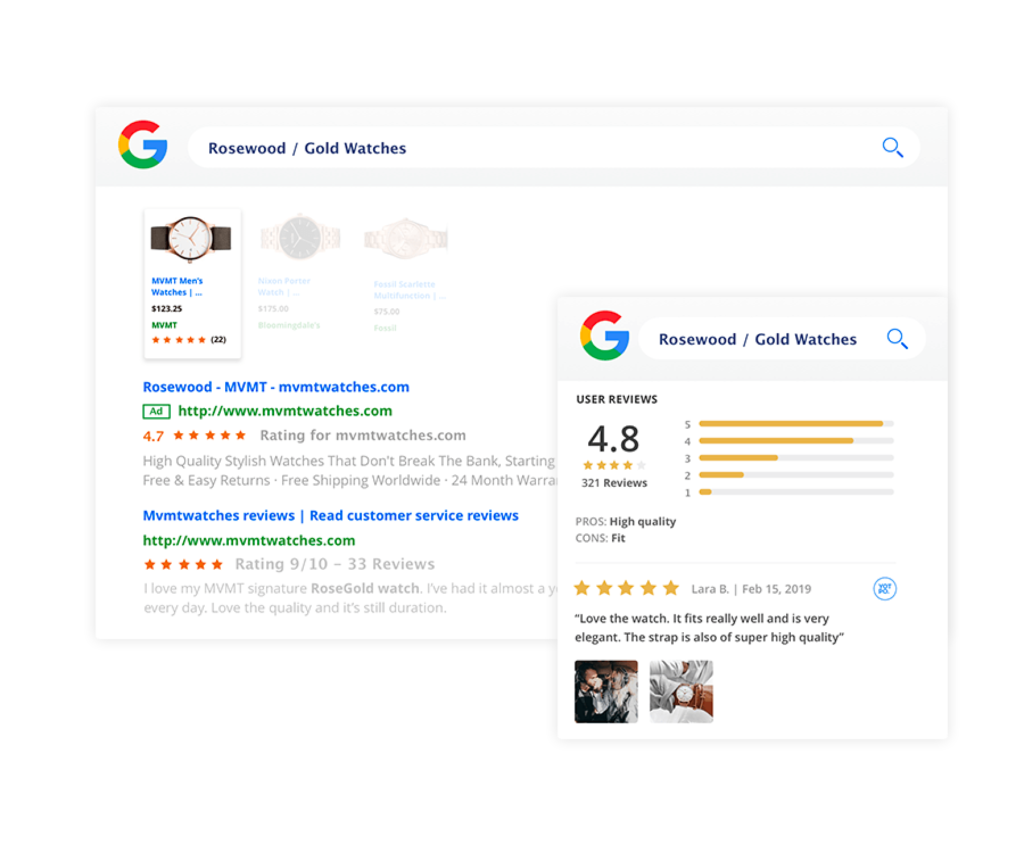
To win over these open-minded, high-intent shoppers, you need to ensure that your Google Shopping campaigns are fully optimized for success. One of the most effective ways to improve your campaigns is by showcasing product and site reviews, star ratings, and customer photos within your GSAs, which you can do with a Trusted Google Reviews Partner like Yotpo. For more tips on how to optimize and enhance your campaigns, check out our guide to Google shopping campaigns.
2. The Challenge: Bring Your Best Content With You
The Strategy: Syndicate Your UGC to Top Retailers
When asked how they first heard of a new product/brand, 30% of survey respondents answered, “I saw it at a retail store.” As the data shows, many of your potential customers rely heavily on third-party retailers when it comes to buying from a brand for the first time, and will deliberately start their search at a trusted favorite like Target, Walmart, Sephora, Neiman Marcus, and more.
Moreover, 19% of survey respondents indicated that what led them to discover a new product or brand were positive customer reviews.
By syndicating your reviews to leading retail sites, which you can do with a partner like Yotpo, you can bring your trust-building customer content to the various platforms that your shoppers rely on for brand discovery.
3. The Challenge: Diversify Your Approach to Social
The Strategy: Experiment With New Channels Like TikTok
These days, it’s impossible to talk about a complete social media marketing strategy without mentioning TikTok — and with good reason. As the number one downloaded app of 2020 so far, and with around half of all users falling into the Gen Z demographic, TikTok provides an unprecedented opportunity for brand discovery.
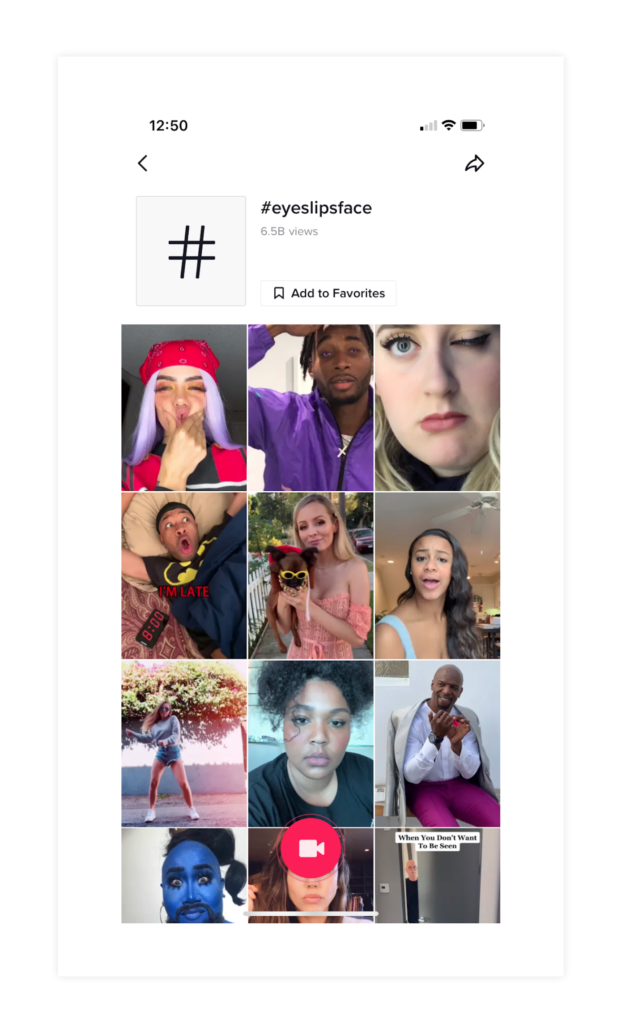 As for how to ace a TikTok campaign? Just look to beauty brand e.l.f. Cosmetics, whose #eyeslipsface challenge — in which users were “challenged” to upload videos of themselves voguing, dancing, and more to a song commissioned especially by e.l.f. — was the platform’s most viral campaign ever. The #eyeslipsface challenge was the first-ever ad to hold the number one trend spot on TikTok, racking up over five million user-generated videos. For more examples of brands who are nailing TikTok marketing, check out Princess Polly and Winky Lux.
As for how to ace a TikTok campaign? Just look to beauty brand e.l.f. Cosmetics, whose #eyeslipsface challenge — in which users were “challenged” to upload videos of themselves voguing, dancing, and more to a song commissioned especially by e.l.f. — was the platform’s most viral campaign ever. The #eyeslipsface challenge was the first-ever ad to hold the number one trend spot on TikTok, racking up over five million user-generated videos. For more examples of brands who are nailing TikTok marketing, check out Princess Polly and Winky Lux.
The Strategy: Upgrade Your Ads With UGC
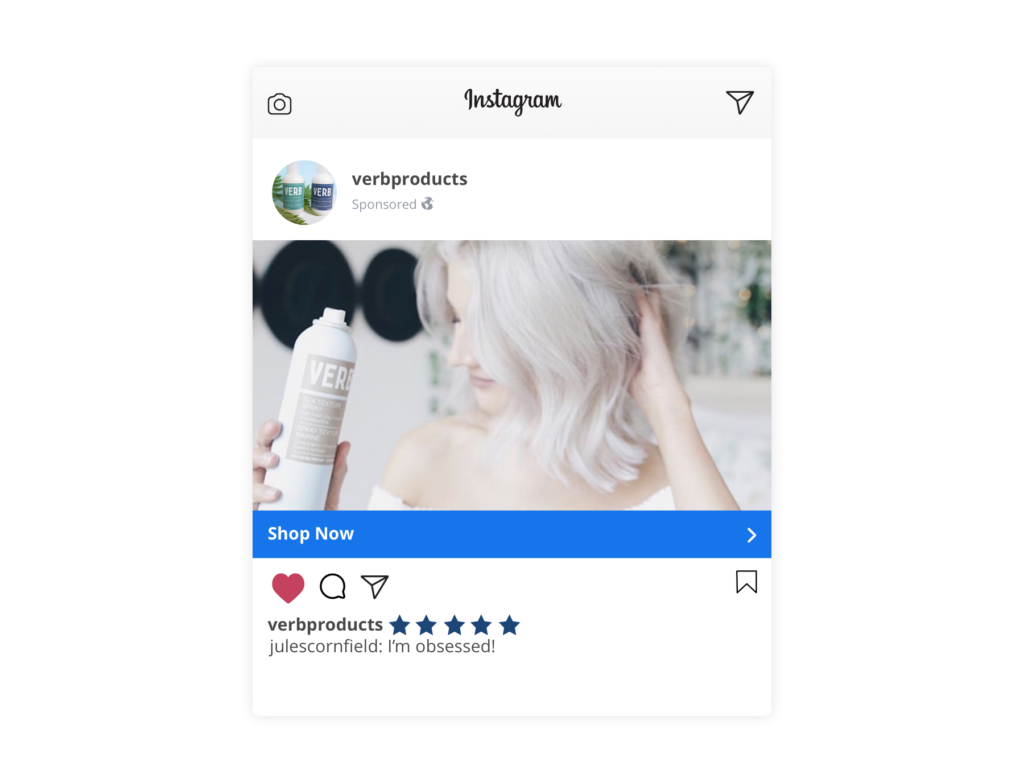 If you’re already collecting customer reviews, photos, and videos, don’t just stick them on your product pages and call it a day — there’s so much more your hard-earned content can do for your brand. Maximize engagement on your Facebook and Instagram ads by featuring UGC directly inside the ads themselves. A joint Facebook-Yotpo case study found that review-based ads have a 4X higher CTR, and a 50% drop in both CPA and CPC.
If you’re already collecting customer reviews, photos, and videos, don’t just stick them on your product pages and call it a day — there’s so much more your hard-earned content can do for your brand. Maximize engagement on your Facebook and Instagram ads by featuring UGC directly inside the ads themselves. A joint Facebook-Yotpo case study found that review-based ads have a 4X higher CTR, and a 50% drop in both CPA and CPC.
4. The Challenge: Bridge the Online-Offline Gap
The Strategy: Invest in Virtual Experiences
With COVID-19 rendering online shopping the only option for most shoppers and businesses, it’s important to remember the 33% of shoppers who still prefer to buy in-person, regardless of how they’re discovering products in the first place. How can you help recreate an in-store experience for these customers, many of whom may feel out of their element buying online?
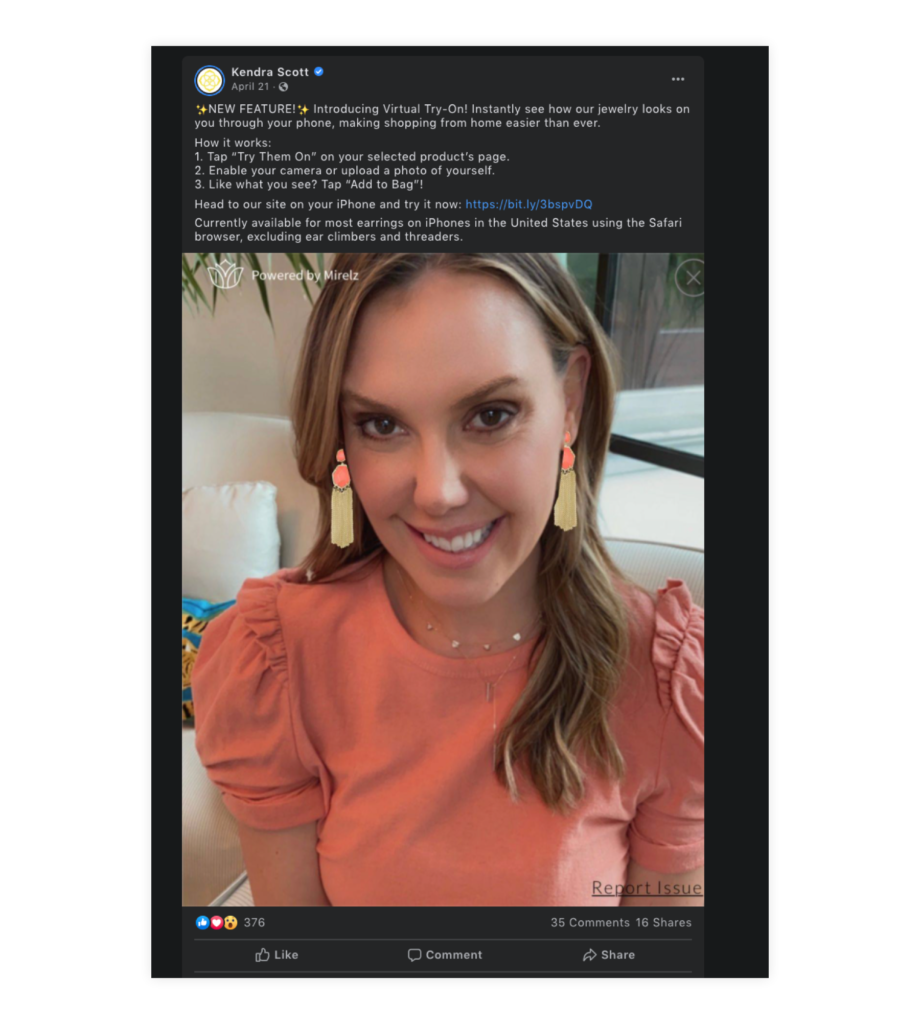 Look to the brands who have tackled this challenge by creating virtual experiences meant to replicate what customers would expect when shopping in-person. After COVID-19 forced them to shut down their physical store locations in March, jewelry brand Kendra Scott rolled out a “Virtual Try-On” feature, where shoppers can use the camera on their phone to see how products would look on them in real life. In a similar vein, with customers unable to shop in-person, underwear brand Knix began offering virtual bra fittings via Google Hangouts.
Look to the brands who have tackled this challenge by creating virtual experiences meant to replicate what customers would expect when shopping in-person. After COVID-19 forced them to shut down their physical store locations in March, jewelry brand Kendra Scott rolled out a “Virtual Try-On” feature, where shoppers can use the camera on their phone to see how products would look on them in real life. In a similar vein, with customers unable to shop in-person, underwear brand Knix began offering virtual bra fittings via Google Hangouts.
The Strategy: Make Relevant Reviews More Accessible
Another way to make your site more engaging is to ensure your customer reviews are as easy to sort through as possible. An on-site Reviews widget enables shoppers to easily sort reviews by the topics that interest them the most, such as “Delivery,” “Size,” “Price, “Skin Type,” and “Fit.” With specific information about your products readily available — and provided by fellow shoppers, to boot — a potential customer used to buying in-store will be more comfortable making the leap to buying online.
The Strategy: Create Seamless Transitions From In-store to Online
As in-person shopping slowly comes back, ensure that shoppers have a flawless buying experience that integrates both in-store and online elements. With an in-store point of sale (POS) integration, you can collect shoppers’ email addresses and phone numbers via a sign-up prompt as they’re checking out in-store, then send them relevant and personalized product recommendations by email or text to keep them engaged.
Furthermore, with a feature like receipt scanning, you can enable your loyalty program members to gain rewards and level up their VIP status wherever they shop, be it in-store or through third-party retailers. Post-purchase, shoppers can scan their receipts online to redeem their loyalty rewards — and your brand can collect email addresses to keep the customer relationship going.



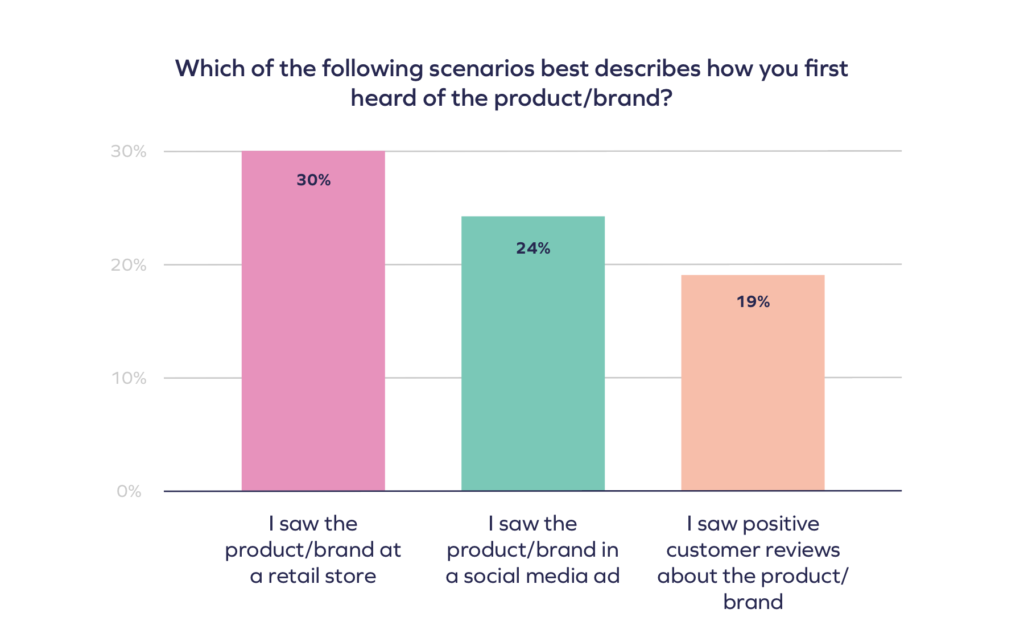



 As for how to ace a TikTok campaign? Just look to beauty brand
As for how to ace a TikTok campaign? Just look to beauty brand  If you’re already collecting customer reviews, photos, and videos, don’t just stick them on your product pages and call it a day — there’s so much more your hard-earned content can do for your brand. Maximize engagement on your Facebook and Instagram ads by featuring UGC directly inside the ads themselves. A joint
If you’re already collecting customer reviews, photos, and videos, don’t just stick them on your product pages and call it a day — there’s so much more your hard-earned content can do for your brand. Maximize engagement on your Facebook and Instagram ads by featuring UGC directly inside the ads themselves. A joint  Look to the brands who have tackled this challenge by creating virtual experiences meant to replicate what customers would expect when shopping in-person. After COVID-19 forced them to
Look to the brands who have tackled this challenge by creating virtual experiences meant to replicate what customers would expect when shopping in-person. After COVID-19 forced them to 
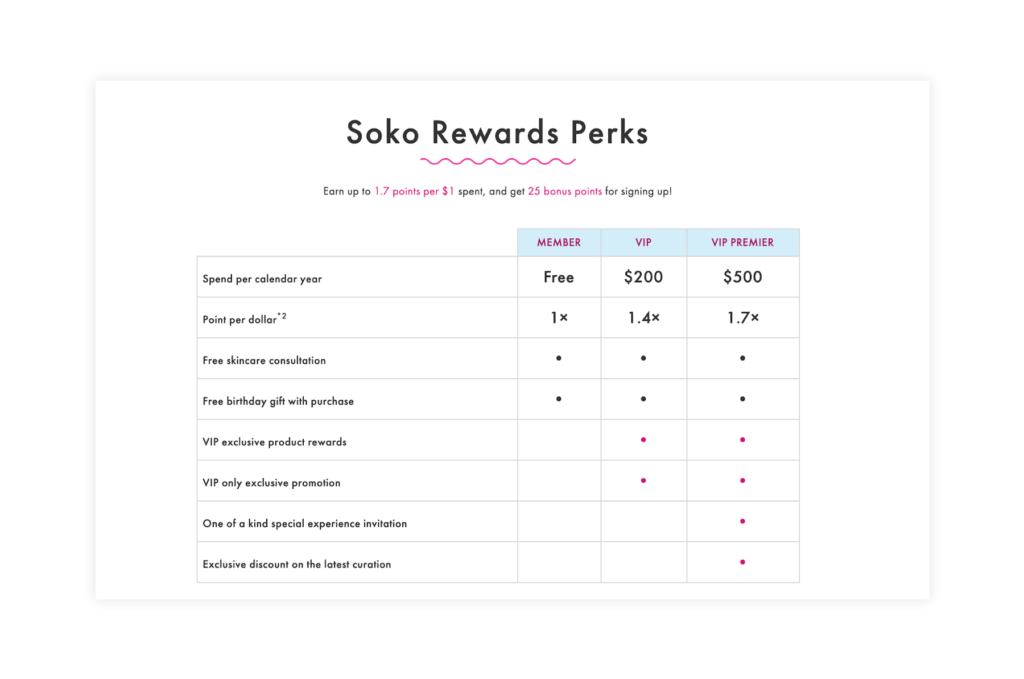


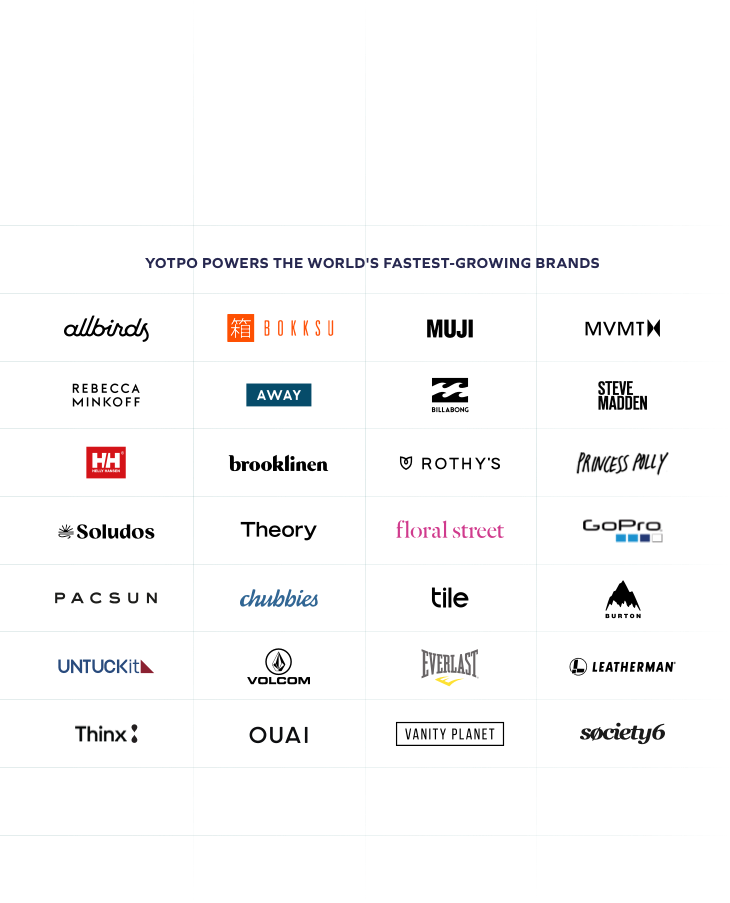



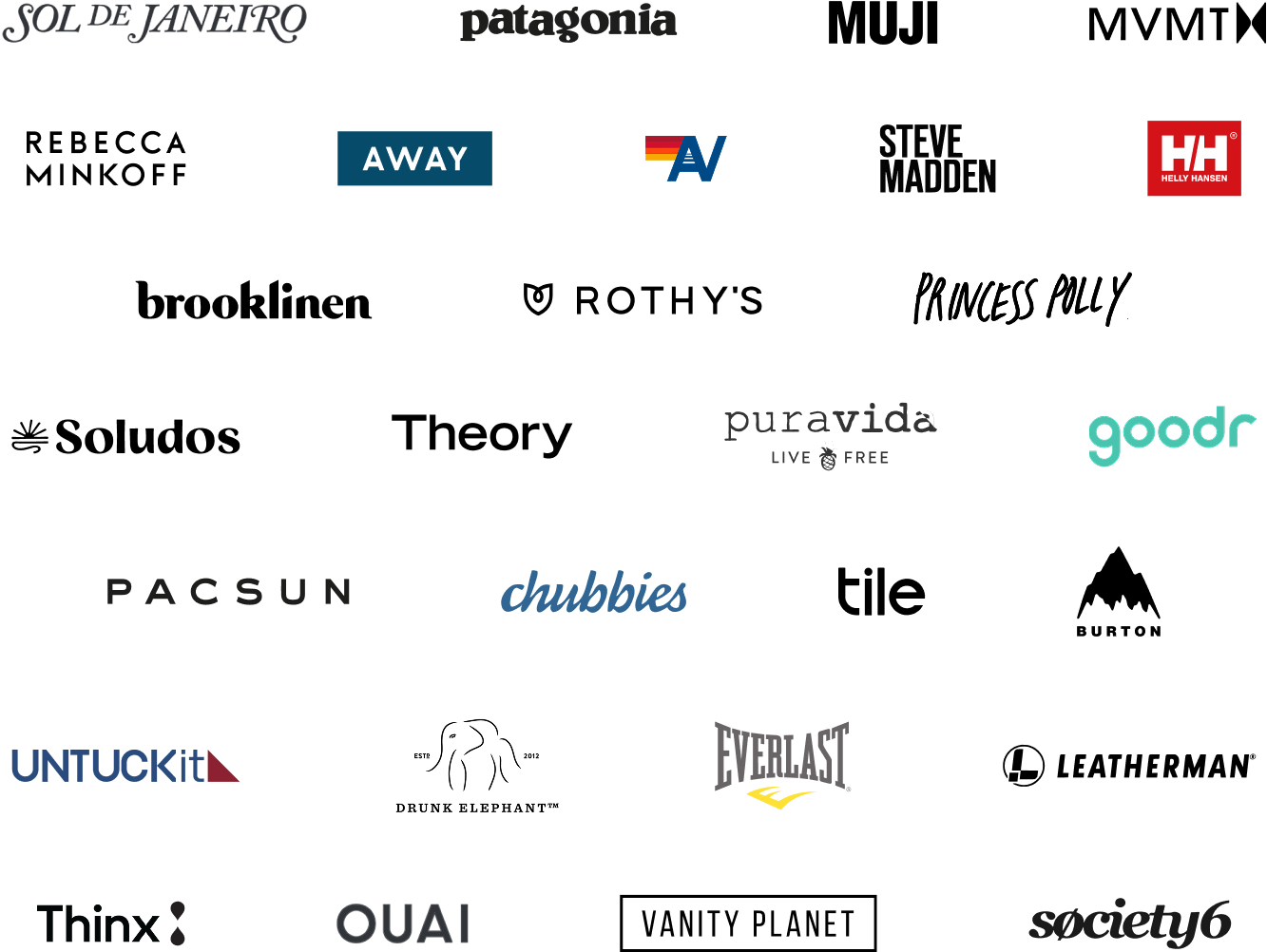



 Join a free demo, personalized to fit your needs
Join a free demo, personalized to fit your needs